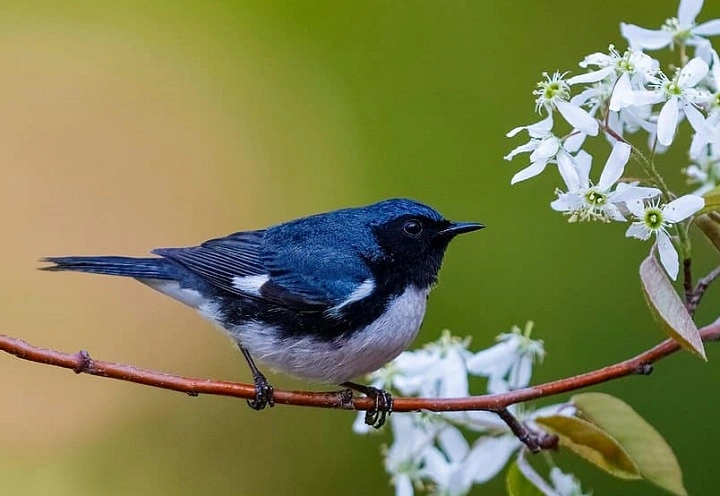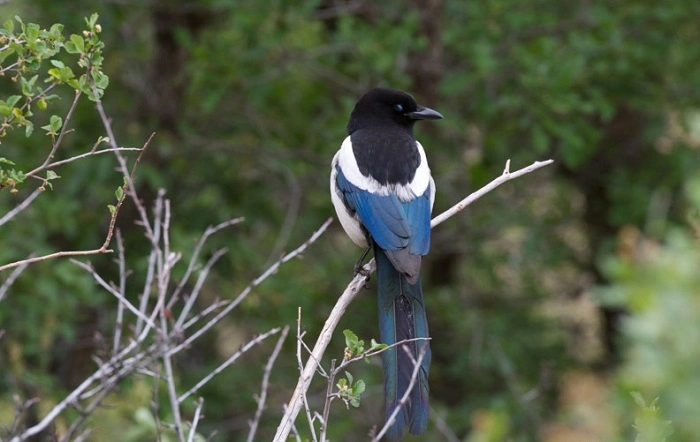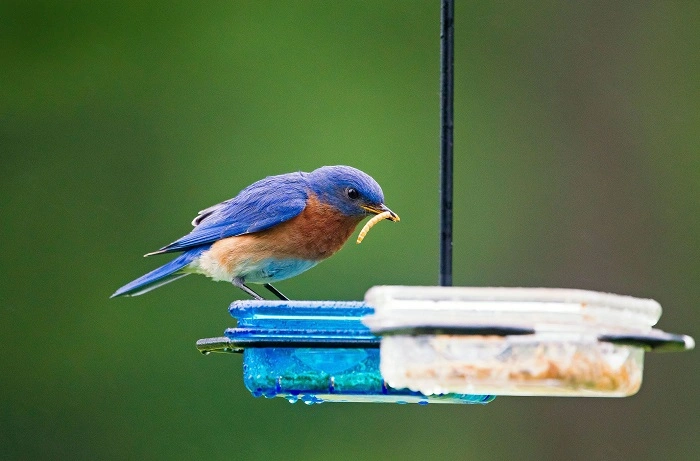Walk with me on the hills of Colorado at dawn. The sky is blue, and the wings are blue to welcome you. A flight over a sweeping meadow. A rolling hymn over a canyon. A bird as blue as the morning sky.
Colorado blue birds are not wildlife in and of themselves. They’re splurges of beauty. They’re a reminder that even where life isn’t nice, beauty cries out. But what do you call them? Wherefrom?
This book brings us to their kingdom. Bluebirds, jays, buntings, and warblers. From mountain tops to your back yard bird feeder. We will discover how to identify them, why they’re so important to us, and what they mean.
Why Blue Birds Are Special

Blue is not typical in the world. That is why every blue feather is a miracle. Red and yellow coloration is not, but blue coloration is unusual. Bird feathers don’t even have blue coloration. There are tiny structures that diffuse light, and that is what makes blue perceivable.
Blue birds are the flesh of heaven. They’re heaven’s snow which falls from heaven upon trees. They compose landscapes and living verse when they come to Colorado.
Most Common Blue Birds of Colorado
Mountain Bluebird
State symbol sweetheart. Males are sky blue. Females are muted, gray-brown in body with blue tips to wings and tail.
Where: Open places, high country, fence posts.
When: Spring to fall, some stay winter.
What it does: Nesting in a protection box or cave. Insect-catching on the wing.
Western Bluebird
Smaller than a mountain bluebird. Rust red and blue on the chest of male. Dullish color but still vivid in females.
Where to see: Forest edge, orchards, parks.
Season: Throughout the year in Colorado.
Song: Soft, melodious notes.
Blue Jay
Jarring and commonplace bird. Blue crown, necklace of black, white spots. Bright and bold.
Where to see: Backyards, woodlands, suburban bird feeders.
Season: Present throughout the year.
Food: Acorns, seeds, insects, and the occasional egg.
Steller’s Jay
Mountain cousin. Dark blue back and black crest. Calls ring through pine woods.
Where to see: Evergreen forests, Rocky Mountain national parks.
Season: Any time.
Behavior: Inquisitive, often raids camps.
Other Blue Birds Worth Knowing
Lazuli Bunting
Small but beautiful. Males turquoise head and orange breast. Females pale brown with blue sheen.
Where to see: Bushy ground, foothills, river bottoms.
Season: Breeds summer and spring.
Song: Melodious, warbling notes.
Indigo Bunting
Males: Deep blue. Females: Dull brown. Their song carries far across open terrain.
Where to see: Grasslands, roadside edges with brush.
Season: Summer breeders migrate south in fall.
Nickname: “Blue canary.”
Barn Swallow
They are not blue, but their back shines cobalt in sunlight. Forked tails cut through the air.
Where to see: Barns, bridges, fields, open sky.
Season: Spring and summer.
Behavior: Showy fliers, diving down to pick up insects out of the air.
Best Birding Locations in Colorado
Rocky Mountain National Park
Steller’s jay and mountain bluebird haven. Meadows ring with song in spring.
Pawnee National Grassland
Open country with room to fit buntings and western bluebirds.
San Juan Mountains
Listen for Steller’s jays shouting from tall pines.
Denver and Front Range Suburbs
Backyards are also enjoyed by western bluebirds and blue jays. Trees and bird feeders are welcome.
Blue Seasons
Spring
Migration begins. Bluebirds return. Lazuli buntings return. Forests resound with new song.
Summer
Breed time. Nests are packed. Parents zip, back and forth, with food. Canyons and fields blaze with color.
Fall
Some depart. Indigo buntings fly south. Blue jays and Steller’s jays cache acorns.
Winter
The mountains grow silent. But Steller’s jays persevere. Some mountain bluebirds endure the cold, splashes of color in the snow.
Blue Birds and Their Songs
Songs have no ornamentation. They’re a survival strategy. They ward off intruders. They woo females.
- Mountain bluebird: Warbling, airy trills.
- Lazuli bunting: Singy, sweetie syllables.
- Indigo bunting: High, clear whistles.
- Jays: Sudden calls, not chatter and imitation.
All songs are a membership story.
Why Blue Matters in Birds
Blue isn’t color—it’s light. Beams are bent and thrown askew by feathers, and blue returns to our eyes. That’s why mountain bluebirds glitter like skies themselves.
Blue speaks of trust, peace, renewal. Birds’ charisma and character.
Blue Birds’ Cultural Symbolism
Blue birds are auspicious omens of bliss. Hope. Compliments.
To the Native people, the mountain bluebird is a joyful bird. In song, a bluebird warbles spring. In spirituality, they remind of heaven’s nearness.
To glimpse one is to be blessed. A whisper: beauty lasts.
Attracting Blue Birds Home
What to Offer
- Mealworms: Bluebirds are protein hungry.
- Suet and peanuts: Jays and bunting grub.
- Native plants: Provide berries and bugs.
What to Build
Bluebird boxes with adequate holes.
Make them clean and predator-proof.
What Not To Do
- Pesticides. They kill food for insects.
- Plastic netting. The birds get trapped.
Conservation of Blue Birds in Colorado
There are dangers. Habitat loss. Window collision. Global warming.
But there is something that can be done. Keep forests intact. Plant native trees. Donate money to conservation organizations. Every feeder, every safe haven yard, every responsible decision counts.
Quick Identification Guide
| Bird | Features | Habitat | Season |
| Mountain Bluebird | Sky blue, plain, no rust | Open meadows | Spring–Fall |
| Western Bluebird | Rusty chest, blue color | Forest edges | Year-round |
| Blue Jay | Raucous call, blue cap | Yards, woodlands | Year-round |
| Steller’s Jay | Black topknot, blue color | Pine forests | Year-round |
| Lazuli Bunting | Orange breast, turquoise head | Brushy foothills | Summer |
| Indigo Bunting | Deep sapphire color | Edges, fields | Summer |
| Barn Swallow | Shimmering blue color on back | Barns, fields | Summer |
Steps to Spot More Blue Birds
- Rise early. Songs in the morning show the way.
- Bring binoculars. Facts are tiny.
- Study songs. Birds sing before they come.
- Hike varied habitats—fields, woods, meadows.
- Walk softly. Blue wings reward softness.
Colorado Blue Bird Tales
Picture a mountain trail. Snow still lingering on the tops. A Steller’s jay sitting atop a fence post, shining like a sliver of sky.
Picture a campsite. A Steller’s jay flashes brightly, looking at your breakfast. Its crest is up. Its call clatters through the pines.
Picture an end-of-summer evening. A Lazuli bunting sings dusk, its blue form shining back at the fading light.
Blue birds are not glimpses. Blue birds are recollections in color.
FAQs: Blue Birds of Colorado
What is the most common blue bird of Colorado?
Mountain Bluebird, a rare sighting overhead over open meadows and high country.
Do I see bluebirds in winter?
There are a few Steller’s Jays and Mountain Bluebirds that remain over winter.
How do I get bluebirds to come to my yard?
Offer mealworms, native plantings, and nesting boxes.
Western and Mountain Bluebirds, how are they different?
Mountain Bluebirds are blue from head to toe. Western Bluebirds are rust-chested.
Indigo and Lazuli buntings, are they in Colorado?
Yes. Lazuli buntings nest here. Indigo buntings pass through during summer.
Closing Thoughts
Blue Colorado birds are more than wings. They are living in the sky. They are hope wedded in twigs. They are voices that call within us to look, to stand still, to believe in beauty.
The next time you are hiking along a trail or in your own back yard, look up. Blue wings over hills. Perhaps you are hearing a voice that is a prayer as much as a song. Keep the moment with you. Let it remind you: the sky is nearer than you.




